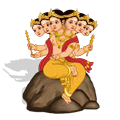























Sunrise06:44 AM, May 31
Sunset06:06 PM, May 31
Moonrise10:34 AM, May 31
Moonset10:11 PM, May 31
Shaka Samvat1947 Vishvavasu
Lunar MonthJyeshtha
WeekdayVelli
PakshaShukla Paksha
TithiPanjami upto 03:45 AM, Jun 01
NakshathramPoosam upto 04:37 AM, Jun 01
YogaVriddhi upto 06:14 PM, May 31
KaranaBava upto 04:12 PM, May 31
KaranaBalava upto 03:45 AM, Jun 01
Rahu Kalam11:00 AM to 0x20bb0011 12:25
Gulikai Kalam08:10 AM to 0x20bb0011 09:35
Yamaganda03:16 PM to 0x20bb0011 04:41
Abhijit12:03 PM to 0x20bb0011 12:48
Dur Muhurtam09:01 AM, May 31 to 09:46 AM, May 31
Dur Muhurtam12:48 PM, May 31 to 01:34 PM, May 31
Amrit Kalam10:19 PM, May 31 to 11:53 PM, May 31
Varjyam12:52 PM, May 31 to 02:26 PM, May 31
Anandadi YogaLambaka upto 04:37 AM
Tamil YogaMarana upto 04:37 AM
Anandadi YogaMruthyu
Tamil YogaMarana
Notes: All timings are represented in 12-hour notation in local time of Fasito`outa, Samoa with DST adjustment (if applicable).
Hours which are past midnight are suffixed with next day date. In Panchang day starts and ends with sunrise.



 Mithuna
Mithuna Thiruvathirai 44:34+
Thiruvathirai 44:34+

 Mithuna 38:07+
Mithuna 38:07+ Punarpoosam 44:04+
Punarpoosam 44:04+

 Simha
Simha Pooram 01:47
Pooram 01:47

 Kanya
Kanya Hastham
Hastham

 Tula
Tula Chithirai 34:45+
Chithirai 34:45+

 Vrishchika
Vrishchika Anusham 43:17+
Anusham 43:17+

 Dhanu
Dhanu Pooradam 01:14
Pooradam 01:14

 Dhanu 31:34+
Dhanu 31:34+ Uthiradam 02:22
Uthiradam 02:22

 Makara
Makara Thiruvonam 02:59
Thiruvonam 02:59

 Makara 39:05+
Makara 39:05+ Avittam 03:02
Avittam 03:02

 Mithuna
Mithuna Mirugasirisham 31:59+
Mirugasirisham 31:59+

 Karka
Karka Poosam 04:37
Poosam 04:37Tamil Panchangam is used by the Tamil population in Tamil Nadu, Puducherry, Sri Lanka, Malaysia and all over the world. Tamil Panchangam has great significance in Tamil Culture and is deeply rooted in the faith of the Tamil Hindus. Tamil Panchangam shows important astronomical elements like Tithi, Nakshatram, Yoga, Karna, Rahu Kalam, Gulikai Kalam etc.
One should avoid Rahu Kalam, Yamagandam, Gulikai, Durmuhurtham and Varjyam as these time periods are not auspicious. The rest of the time left after eliminating them is considered Shubh.
The Abhijit Muhuratam and Amrit Kalam are considered auspicious. If inauspicious time overlaps with auspicious time then the inauspicious time period should be removed from the auspicious time window.